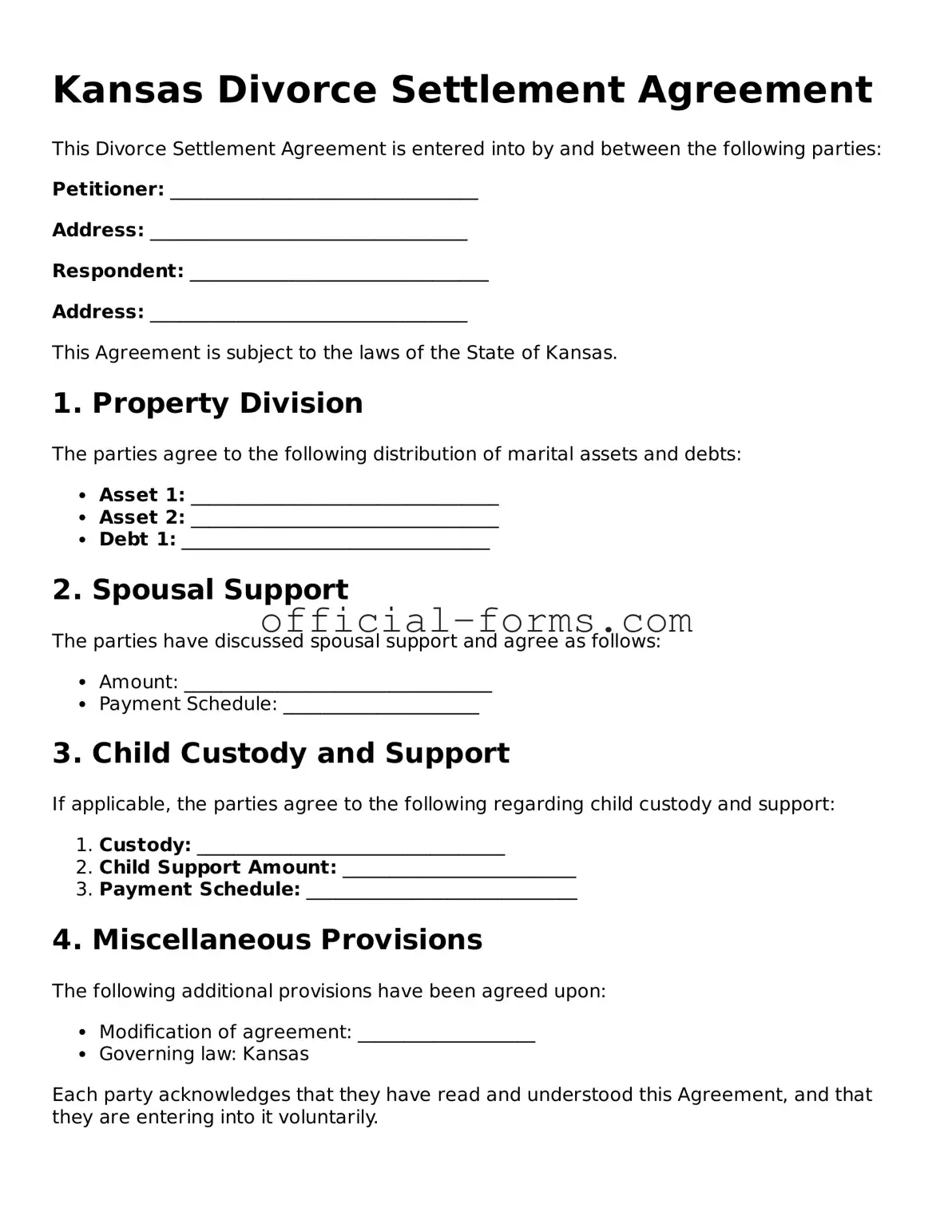Official Kansas Divorce Settlement Agreement Document
The Kansas Divorce Settlement Agreement form serves as a crucial document that outlines the terms agreed upon by both parties during a divorce. This form addresses various aspects such as property division, child custody, and support obligations, ensuring that the interests of all involved are considered. By formalizing these agreements, the form helps to facilitate a smoother transition for families navigating the complexities of divorce.
Open My Divorce Settlement Agreement Now
